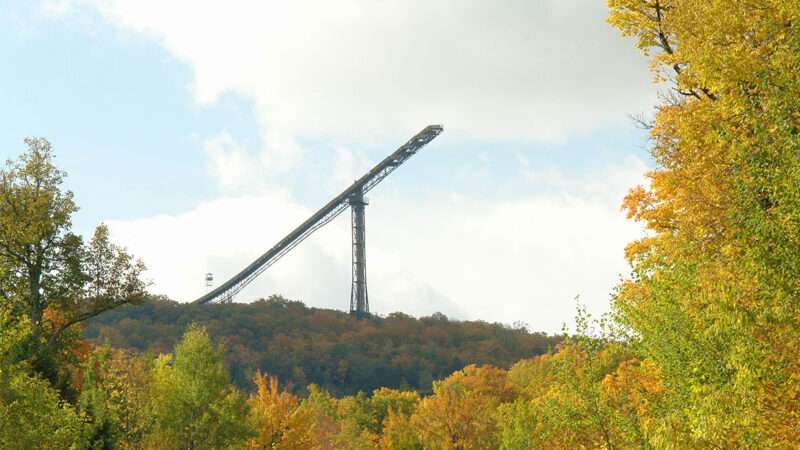
In 1994, Copper Peak, a ski-flying hill located in a remote area of the Upper Peninsula of Michigan, hosted its last ski-jumping competition—or so it thought. At the time, the site was $300,000 in debt and needed considerable maintenance to address erosion. There's been no ski flying at Copper Peak for 30 years, but for $25 adults can take an "adventure ride" up the hill to see the 360-degree view. Michigan lawmakers apparently think they can bring the site back to its glory days—in March 2022, they allocated $20 million to revitalize the park in order to "attract international ski competitions and provide sports-related tourism."
Ski flying is like ski jumping but at longer distances. The largest ski-jumping hills used for Olympic competitions are typically between 120 meters and 140 meters; Copper Peak sits at 180 meters. With this unexpected cash infusion, Copper Peak wants to become the only ski-flying hill in the world with surfaces that can be used year-round.
"The western [Upper Peninsula] has been dealt many blows economically for years, the most recent of which was the untimely and unnecessary closure of Ojibway Prison," state Sen. Ed McBroom (R–Waucedah Township) said after approving the massive grant for Copper Peak. But the closure of a prison that employed 200 people and held 1,100 inmates is no justification for pouring millions of taxpayer dollars into a money pit.
Even though the reconstruction plans include keeping the 73-meter tower intact, the rebuilding effort is already hitting roadblocks. The modernization effort has to follow the meticulous guidelines of the International Ski and Snowboard Federation in order to host competitions, which means that the entire landing area will have to be redone. This includes filling the area with concrete and plastic coverings.
A post on Copper Peak's own website already describes delays due to "unexpected factors, including elevated costs, supply chain difficulties, and the impact of inflation," thus requiring "Copper Peak to reevaluate both the project timeline and overall budget." Looks like $20 million wasn't enough.
For a ski-flying hill that was built in 1969 for $1 million (roughly $8.4 million in today's dollars), it seems awfully silly for the state government to pour more than double the site's original cost into its revitalization. Not to mention there are already two other ski jumps in the Upper Peninsula—Pine Mountain and Suicide Hill, which is also the home of the U.S. Ski & Snowboard Hall of Fame and Museum.
By funding the revival of this ski-flying hill, the state of Michigan is hoping it will bring in an estimated $50 million from visitors in the first four years. But the forecasted economic impacts of similar government subsidies rarely come to fruition. If a ski-flying hill needs an injection of government cash to get going, the project may never manage to get off the ground.
The post Michigan Is Spending Millions Trying To Refurbish a Ski-Flying Hill. It's Not Working. appeared first on Reason.com.







